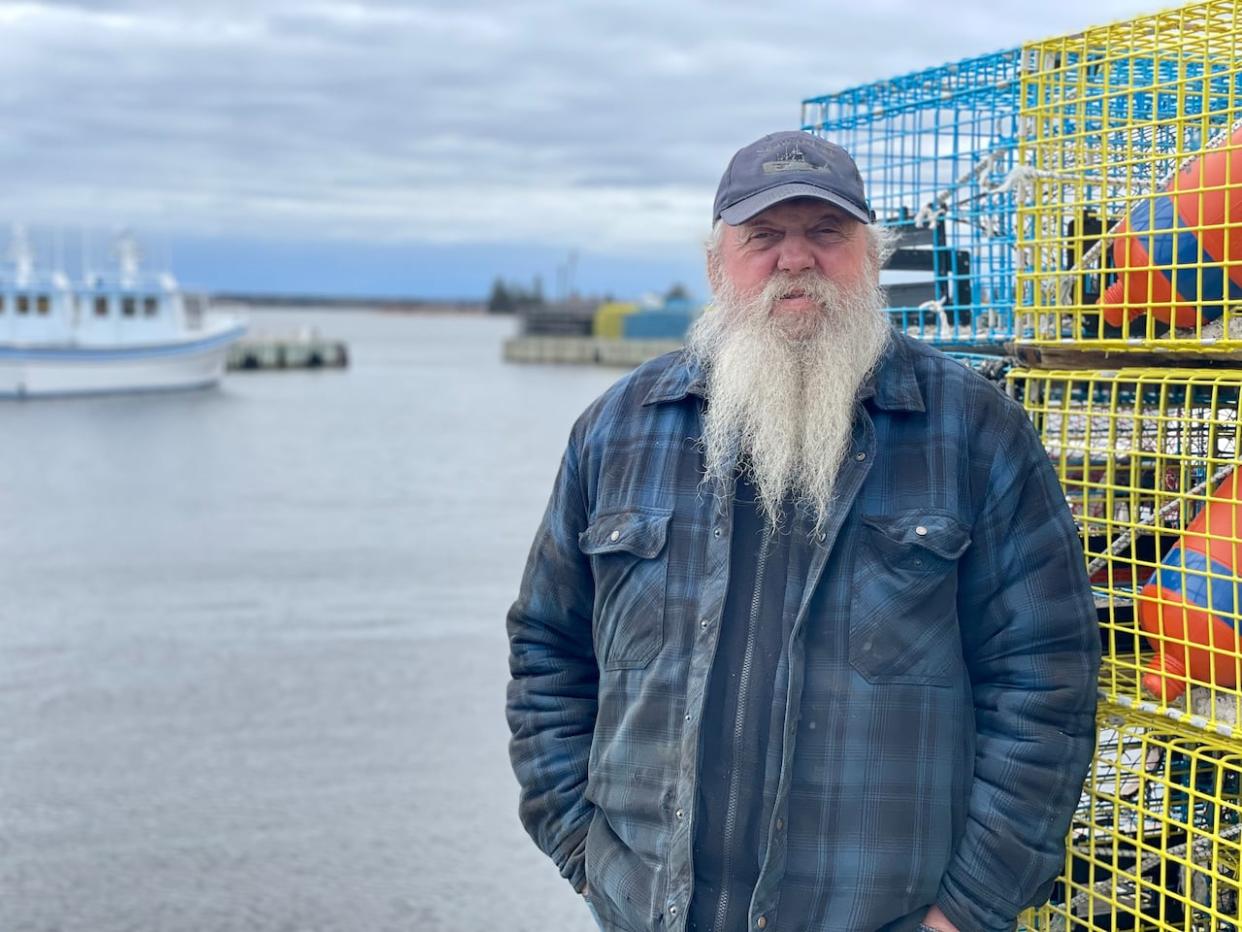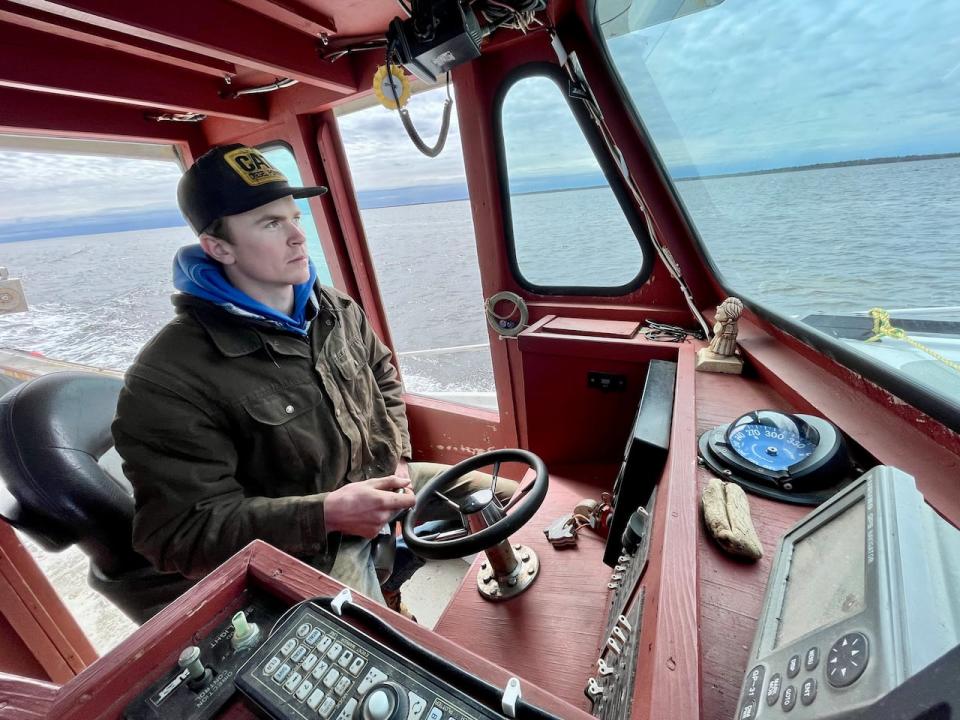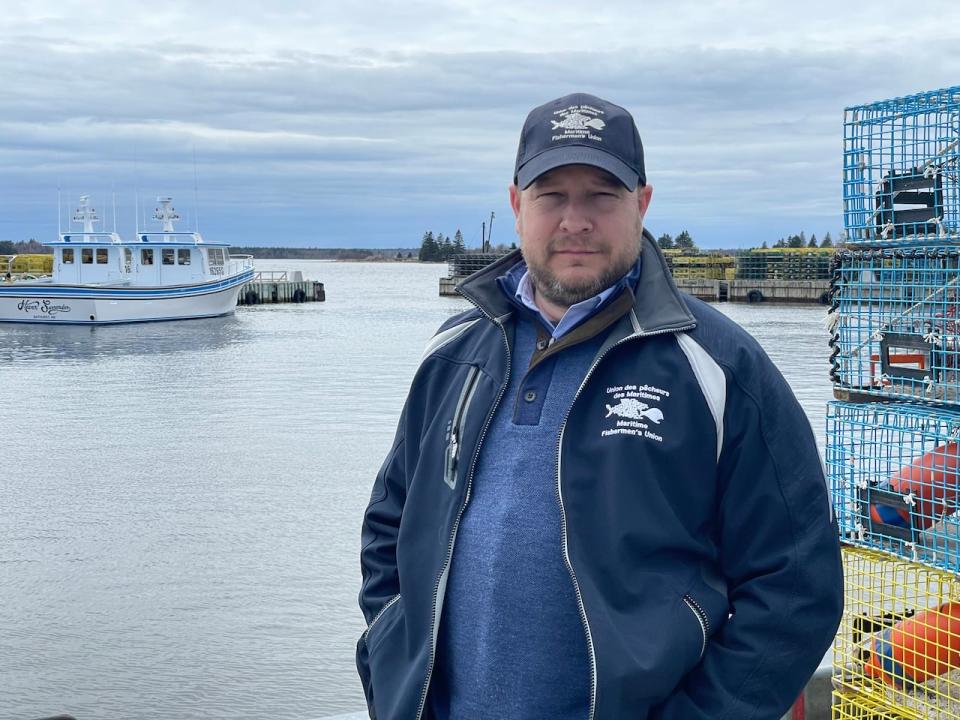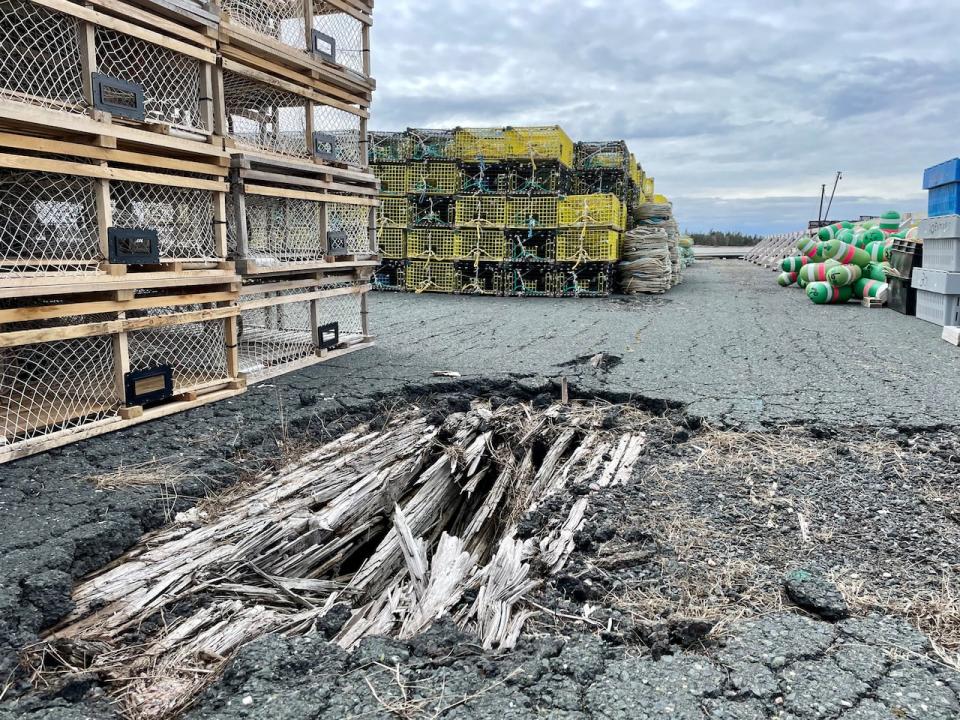Tabusintac fishermen fight for dredging to clear 'dangerous channel'

On a cloudy April afternoon, Weldon Harding is scanning the waters of Tabusintac Bay, in northeastern New Brunswick, from the back of a lobster fishing boat. He points out a long sandbar, indicating the start of a shallow channel to enter and exit the harbour.
"It's narrow, it's shallow and if you come in and it's rough, you hit the bottom and the next wave takes you and sinks you."
As the boat passes near the gully at high tide, water levels on the marine depth sounder dip to just above one-and-a-half metres, or five feet.
In a storm in 2013, three fishermen died after their boat ran into the sandbar and capsized in rough weather.
WATCH | 'It's dangerous every time you go in and out':
Harding is one of dozens of fishermen in Tabusintac, 50 kilometres northeast of Miramichi, calling on the federal Department of Fisheries and Oceans to dredge the channel before the start of the lobster season.
DFO started dredging the harbour after the 2013 tragedy, but announced this week it would postpone operations in Tabusintac and Pointe-Sapin until another year.

Liam MacEachern navigates the waters of Tabusintac Bay in his lobster boat, tracking the depths of the harbour on a marine depth sounder. (Alexandre Silberman/CBC)
Spokesperson Michèle Bernier said DFO continues to be in close communication with local harbour authorities about infrastructure needs.
"Each year, Fisheries and Oceans Canada must dredge dozens of harbours across the country before the spring fishing season opens, and must prioritize the funds available to maximize the operational capacity of as many harbours as possible," Bernier said in a statement.
The MacEachern's Point wharf in Tabusintac is used by more than 100 fishermen, including some members of nearby Esgenoopetitj First Nation. On Wednesday, they protested outside the DFO office in Tracadie.
Many people waved signs referencing the death of those three fishermen in 2013. At the time, fishermen had been complaining about the narrow channel and urging federal officials to dredge the area.

Martin Mallet, executive director of the Maritime Fishermen's Union, says the Tabusintac wharf at MacEachern's Point is one of the worst he's seen. (Alexandre Silberman/CBC)
A report by the Transportation Safety Board determined additional navigation buoys were required on both sides of the channel because it was less than 30.5 metres wide.
The Maritime Fishermen's Union has also joined the calls to demand dredging and improvements to the wharf.

Part of the wharf at MacEachern's Point in Tabusintac has been condemned due to the need for extensive repairs. Part of the structure is collapsing into the harbour. (Alexandre Silberman/CBC)
Martin Mallet, the organization's executive director, said the deteriorating wharf itself is one of the worst he's seen in the Maritimes.
"Part of the wharf is completely closed, and we still have the same number of fishermen," he said. "If they don't have a spot to park their trucks or put their traps or unload their fish, then we have a serious issue."
Fisherman Shane Ross said the channel also needs navigation buoys, in addition to dredging, for boats to safely enter and exit the harbour. He said nearby wharves have no space, so Tabusintac fisherman have no choice but to use the one at MacEachern's point.
"We need something done. Or there's going to be another tragedy," he said.

